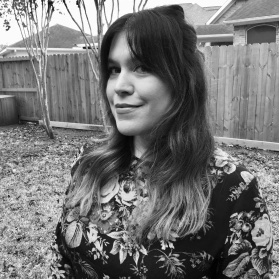with gratitude to Wanda Coleman & Terrance Hayes
for Kristen
We have the same ankles, hips, nipples, knees—
our bodies bore the forks/tenedors
we use to eat. What do we eat? Darkness
from cathedral floors,
the heart’s woe in abundance. Please let us
go through the world touching what we want,
knock things over. Slap & kick & punch
until we get something right. ¿Verdad?
Isn’t it true, my father always asks.
Your father is the ghost of mine & vice
versa. & when did our pasts
stop recognizing themselves? It was always like
us to first person: yo. To disrupt a hurricane’s
path with our own inwardness.
C’mon huracán, you watery migraine,
prove us wrong for once. This sadness
lasts/esta tristeza perdura. Say it both ways
so language doesn't bite back, but stays.
Published:
2019
Length:
Regular
Literary Movements:
Contemporary
Anthology Years:
Themes:
Bilingual
Intersectionality & Culture
Poetic Form
Literary Devices:
Anadiplosis
A device in which the last word or phrase of one clause, sentence, or line is repeated at the beginning of the next.
Asyndeton
the absence of a conjunction (for, and, nor, but, or, yet, so…) between phrases and within a sentence
End Rhyme
when a poem has lines ending with words that sound the same
Iambic Pentameter
a line of verse composed of five iambs– an unstressed syllable followed by a stressed syllable (u / u / u / u / u /) commonly used in the Renaissance period
Internal Rhyme
A rhyme involving a word in the middle of a line and another at the end of the line or in the middle of the next.
Polysyndeton
the repetition of conjunctions frequently and in close proximity in a sentence
Slant Rhyme
A rhyme where the words have similar sounds in their stressed syllables.
Sonnet
A poem with fourteen lines that traditionally uses a fixed rhyme scheme and meter.

